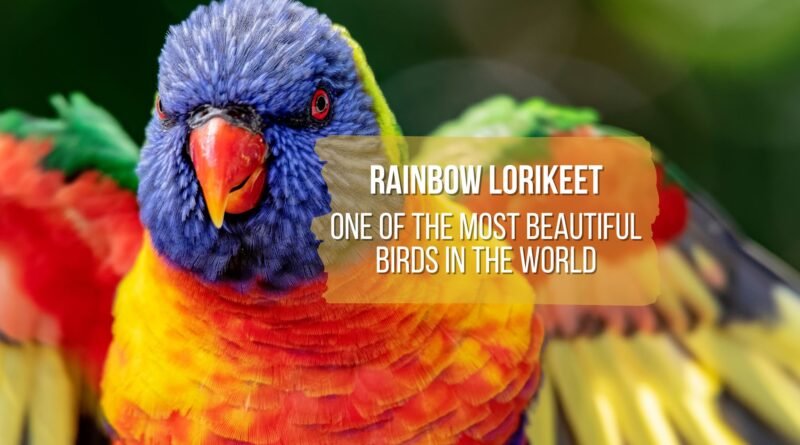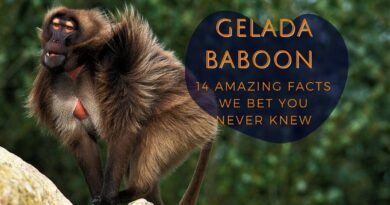Rainbow lorikeet: one of the most beautiful birds in the world
The bird kingdom is home to a multitude of magnificent species, each with its distinct beauty. Exuberant colors and shapes, brilliant plumage, unique behaviors, and a visual extravagance that is a sight for sore eyes. Nature is dazzling and today, in this article, we will learn a little about one of the most beautiful birds in the world, the rainbow lorikeet. Let’s get to know a little about its natural habitat and the characteristics that make it a true jewel. Are you ready? Enjoy reading and have fun!
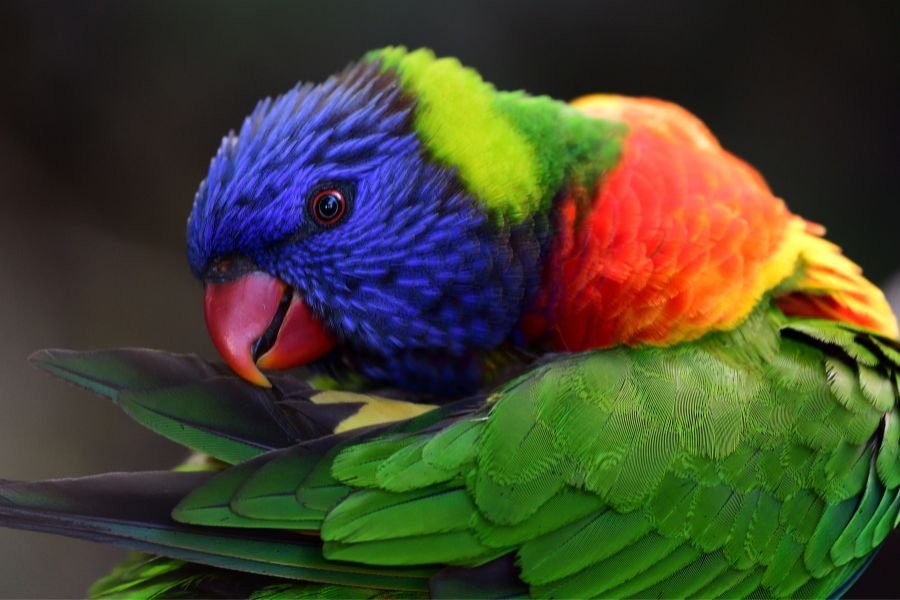
Rainbow lorikeet (Trichoglossus moluccanus)
The rainbow lorikeet is part of the immense Psittacidae family, which includes parrots, parakeets, macaws, among others. It is native to the Oceania region, more specifically the Moluccas, which are part of Indonesia. These islands form an archipelago known worldwide for its biodiversity, which includes exotic birds and the rainbow lorikeet is one of them.

Habitat
It is these islands that the rainbow lorikeet calls home. An environment as lush as it is, where dense forests provide the perfect habitat for these vibrant birds. This multicolored bird has a remarkable climbing ability, facilitated by its sharp claws. That’s why it is usually found in the upper layers of forests. Due to these characteristics, it becomes very easy for them to move among the trees.
It is important to emphasize that the habitat of the rainbow lorikeet is threatened due to forests’ destruction and rampant logging. One of the main concerns regarding the conservation status of these most beautiful birds in the world is exactly this one, the loss of their habitat.

Physical features
The rainbow lorikeet has several features that make it one of the most beautiful birds in the world. Its intense and vibrant coloration, with a wide range of colors, which include shades of blue, red, green, orange, and yellow, creates a dazzling pattern on its little body. Its feathers are thick and dense, as well as soft and help it to protect itself from climatic variations and natural elements such as rain and wind. Its large, expressive eyes with bright iris, in contrast to its colorful plumage, contribute to an exotic and enchanting appearance.
The average size of an adult rainbow lorikeet is 9.8 to 11.8 inches and its lifespan in nature is around 15 years, while in captivity it can reach 30 years.
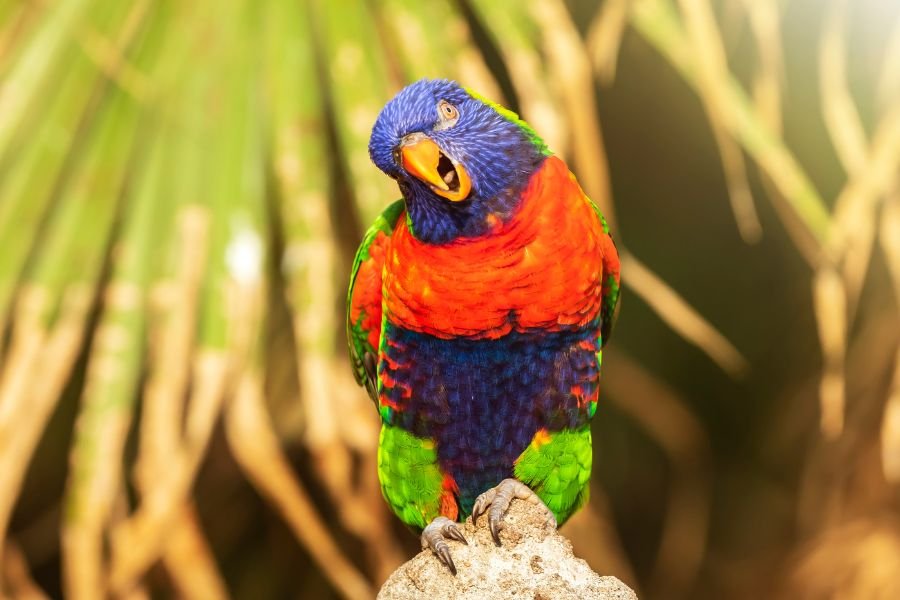
Behavior
They spend most of their time in the treetops, resting during the day, seeking shelter among the dense foliage. They are birds with crepuscular habits, that is, they are more active at sunrise and sunset.
One of the most notable characteristics of these most beautiful birds in the world is their ability to move around. They do this slowly and cautiously, using their sharp claws to grip the branches of trees.
Another distinctive characteristic of this bird species is its vocalization. To communicate between individuals in the group, they emit melodious calls, which can range from soft whistles to high-pitched screams. This communication is done to “clarify” questions about territory, mating, and warnings of danger.
In terms of social behavior, they are normally found in pairs or small family groups. Mutual help in the search for food and protection of the territory is part of the dynamics of the group, its social structure is highly collaborative.
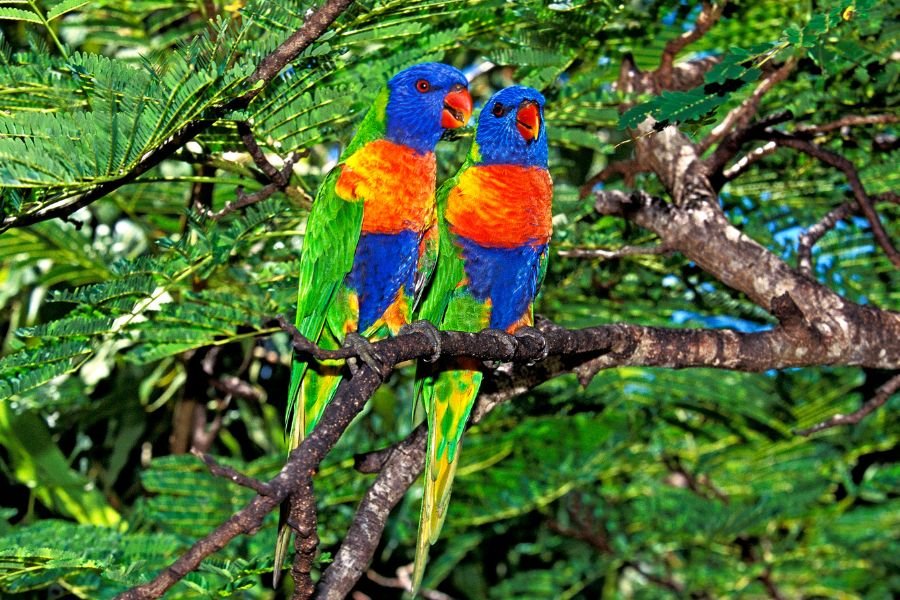
Breeding
These cuties are monogamous, faithful to their partner for life, they even make their “trips” between the trees always together, and they never split. Courtship is one of the functions of their calls and is commonly used during the breeding season. Other displays include body movements to show off their vibrant colors. After forming a couple, they build their nest in tree cavities, such as natural crevices or holes. They can also take over nests abandoned by other birds.

The female rainbow lorikeet lays 1 to 2 eggs per pregnancy, which are incubated by both parents. In this aspect, the collaborative nature of this bird species is demonstrated once again. The care for the little ones, after the hatching of the eggs, is still on the part of the two parents. Dad and mom continue to care together, sharing tasks. The sexual maturity of this species is reached around one year of age, on average. These birds have a very low breeding rate, which makes them vulnerable to environmental threats.
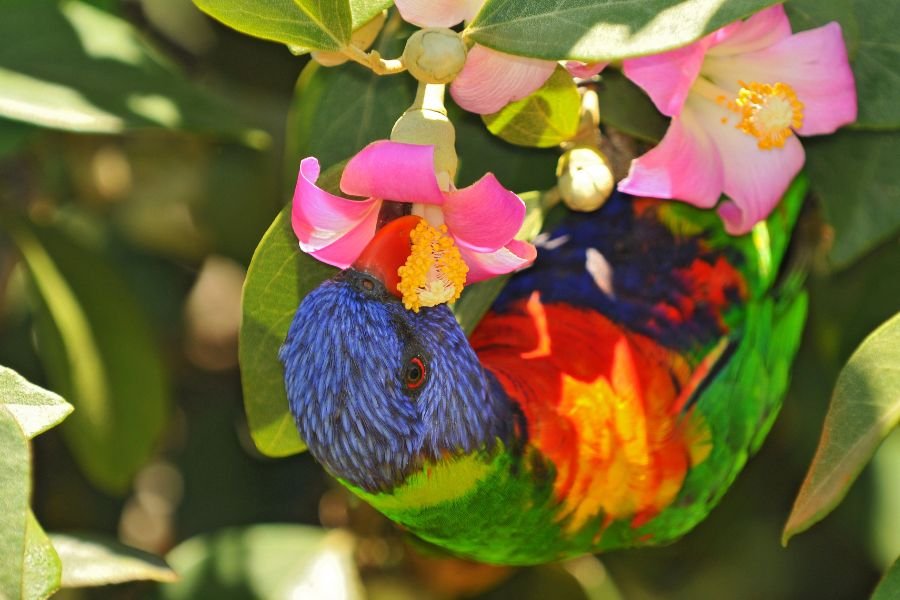
Food
These cuties, considered one of the most beautiful birds in the world, like to feed on nectar, fruits, pollen, and small insects and spend most of their time doing so, in the treetops. These birds have a specialized tongue to remove nectar from flowers, as it is long and has a type of brush with papillae on the tip of the tongue, which makes the process even more efficient.
Ants, beetles, and spiders are also part of their menu and provide essential protein for their diet. Their physical adaptations, such as their beak, tongue and strong jaws, and their claws that enable them to cling to branches and move between trees are characteristics that make them efficient in the food search.
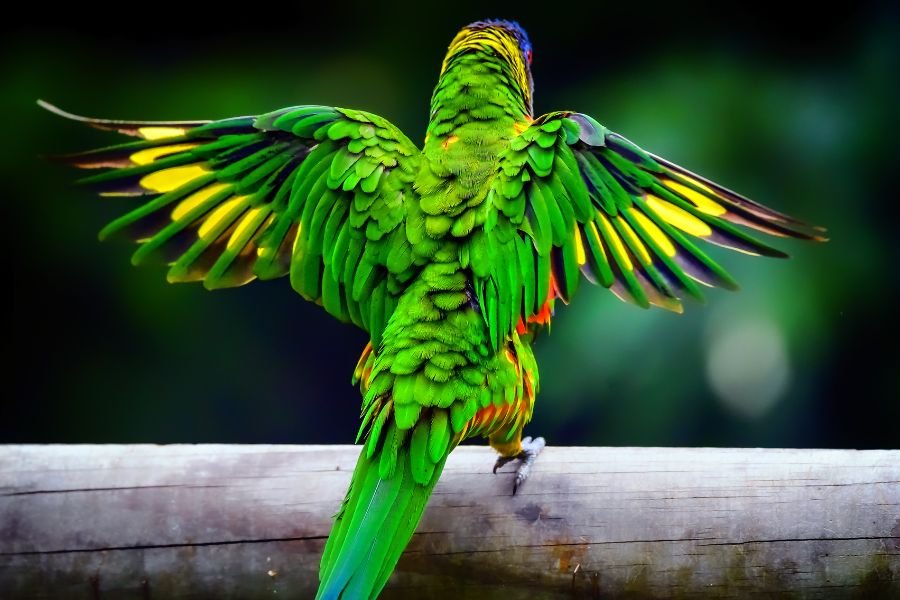
Conservation status
Luckily for us and all nature lovers, this beautiful bird is not endangered, although its population has been showing a slight decline in recent years, according to the IUCN – International Union for Conservation of Nature. Still, it is the most sighted bird in Australia. Lucky for us!
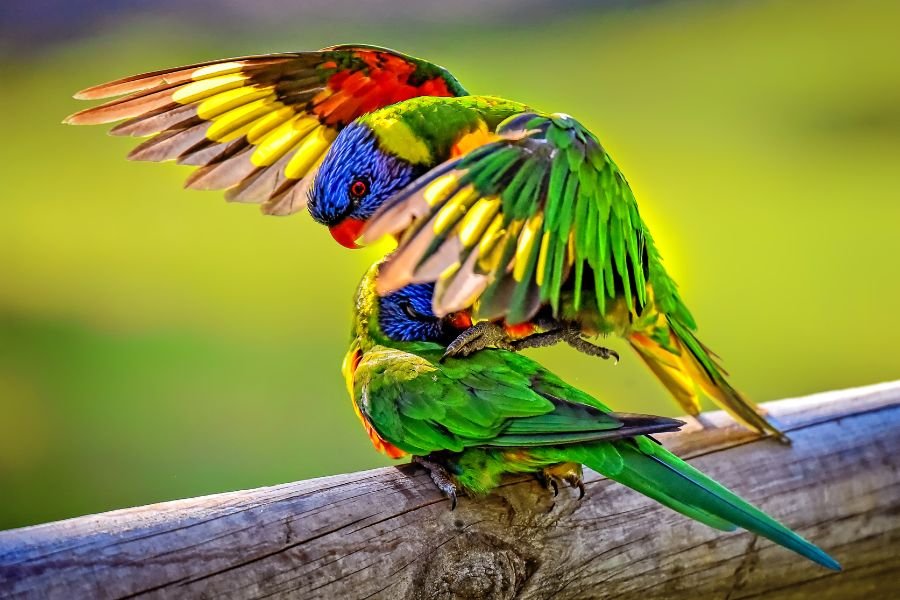
Conclusion
Getting to know nature and the animals that are part of it shows us the importance of protecting it. Birds, like all fauna and flora, depend on us for their survival, through awareness, education, and preservation efforts.
By exploring the origin of this magnificent bird, the rainbow lorikeet, its habitat, behavior, breeding, and feeding, we were able to understand a little more about the complexity and wonder of this species.
We hope you enjoyed getting to know a little bit about one of the most beautiful birds in the world, which is just one of the many stunning species that inhabit our world.
To the next! ♥

